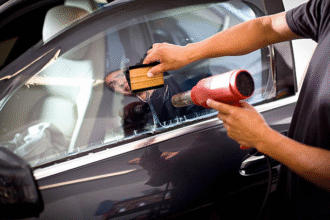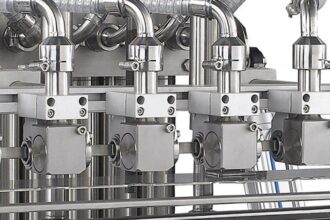Introduction to 2.08吨的车能用2吨的千斤顶吗?
When it comes to maintaining your car, having the right tools is essential. Imagine this: you’re ready to change a tire or perform some routine maintenance on your 2.08-ton vehicle, but all you have is a 2-ton jack. You might find yourself wondering, “2.08吨的车能用2吨的千斤顶吗?” This question isn’t just about numbers; it’s about safety and ensuring that you have the best equipment for the job. Let’s dive into this topic and see what makes sense when it comes to lifting your car safely and effectively!
Understanding the concept of weight distribution in cars
Weight distribution plays a crucial role in how a vehicle handles, accelerates, and brakes. When the weight is evenly spread across the four wheels, it enhances stability. This balance helps to maintain traction on different surfaces.
Different vehicles have varying weight distributions based on their design and purpose. For instance, sports cars often have a rear bias for better acceleration during turns. Conversely, sedans typically aim for an even distribution for comfort and control.
Understanding this concept is essential when performing maintenance tasks like changing tires or inspecting undercarriages. Uneven weight can lead to issues with jacks that aren’t rated properly for your car’s specific needs.
When using any lifting equipment, consider how your car’s weight is distributed before making decisions about tools and techniques.
The impact of using a jack with a lower weight capacity
Using a jack with a lower weight capacity than your vehicle can lead to serious issues. When lifting a 2.08-ton car with a mere 2-ton jack, you risk overloading the tool. This strain can compromise its structural integrity.
If the jack fails while elevated, it could drop suddenly. Such an event poses significant danger not only to you but also to anyone nearby. Injuries from falling vehicles are severe and often life-altering.
Additionally, reliance on inadequate equipment can damage your car’s undercarriage or suspension components during lifting attempts. The wrong choice in jacks doesn’t just affect safety; it impacts performance as well.
Using tools designed for specific weights is essential in automotive maintenance. It ensures reliability and reduces risks significantly when you’re working underneath your vehicle.
Potential risks and dangers of using an inappropriate jack
Using a jack that doesn’t match your vehicle’s weight can lead to serious consequences. A 2-ton jack may struggle with a 2.08-ton car, compromising stability and safety.
If the jack fails while lifting, it can cause the vehicle to fall unexpectedly. This poses risks not only to you but also anyone nearby. Injuries from falling cars are often severe and can result in long-term damage.
Moreover, an unsuitable jack might not lift high enough for necessary maintenance tasks. You could find yourself working awkwardly or in uncomfortable positions, increasing the likelihood of accidents.
Additionally, relying on inadequate equipment may void warranties or insurance claims if something goes wrong. Always prioritize using tools designed for your specific needs to prevent these hazards from occurring altogether.
Factors to consider when choosing the right jack for your car
When selecting a jack for your vehicle, start by checking the weight capacity. A jack should exceed your car’s weight to ensure safety and stability during use.
Next, consider the type of jack that suits your needs. Floor jacks are ideal for home garages due to their ease of use and portability. Bottle jacks offer compact options but may require more effort to operate.
Don’t overlook the height range either. Ensure that the jack can lift your car high enough for tire changes or maintenance tasks while remaining stable at maximum height.
Also, think about build quality and materials used in construction. A sturdy steel frame typically lasts longer than plastic alternatives.
Evaluate additional features like built-in safety locks or wheels for easier maneuverability. These elements can enhance convenience while providing an extra layer of safety during lifting procedures.
Alternatives to using 2.08吨的车能用2吨的千斤顶吗?
If you find yourself questioning whether a 2-ton jack is suitable for your 2.08-ton vehicle, consider alternative lifting solutions.
A hydraulic floor jack with a higher weight capacity can give you peace of mind. Look for jacks rated at least 3 tons to ensure ample support.
Another option is using ramps. Vehicle ramps provide an excellent way to lift your car while distributing weight evenly across the surface, making it safer and more stable.
Portable lifts are also available for those seeking versatility in their garage or workshop. These lifts often accommodate various vehicles and offer easy access beneath them.
Investing in quality jack stands can enhance safety when working under your car after it’s lifted. Always choose stands that exceed your vehicle’s weight for added security during maintenance tasks.
Conclusion: Safety should always be the top priority when it comes to car maintenance
Safety in car maintenance cannot be overstated. When working on your vehicle, the right equipment is crucial.
Using a jack that can support the weight of your car ensures stability and reduces risks. A mismatched jack can lead to accidents that may cause injuries or damage.
Always inspect your tools before use. Look for wear and tear, as even reliable jacks have limits. Being proactive in checking your gear enhances safety.
Educate yourself about proper lifting techniques too. Knowing how to position a jack correctly makes all the difference.
Never hesitate to seek professional help if you’re unsure about any aspect of maintaining your vehicle. Prioritizing safety protects not just you but also those around you while keeping your car running smoothly.
FAQs
The safety of using a jack is paramount, especially when lifting a vehicle. Here are some frequently asked questions that may help clarify any lingering concerns about whether a 2.08-ton car can use a 2-ton jack.
Q: Is it safe to use 2.08吨的车能用2吨的千斤顶吗?
A: Using a 2-ton jack for your heavier vehicle poses risks. While the weight difference seems minor, it’s crucial to consider the margin of error and potential stress on the jack.
Q: What happens if I exceed the weight limit of my jack?
A: Exceeding the weight capacity could lead to equipment failure or malfunction, potentially resulting in accidents or injuries during maintenance tasks.
Q: Are there different types of jacks suitable for heavy vehicles?
A: Yes! There are various types designed explicitly for larger weights, such as hydraulic floor jacks or bottle jacks with higher load capacities suited for heavier cars.
Q: How do I know what type of jack is best for my needs?
A: Assess your car’s weight along with how often you will perform maintenance tasks. A professional opinion from an auto technician can also provide clarity on which equipment suits you best.
Q: Where should I place the jack under my vehicle?
A: Always refer to your owner’s manual for specific lift points recommended by manufacturers. This ensures stability while lifting and reduces risk during usage.
By addressing these questions, hope we’ve shed light on important considerations surrounding this topic and emphasized that safety should never be overlooked in automotive care practices.

















